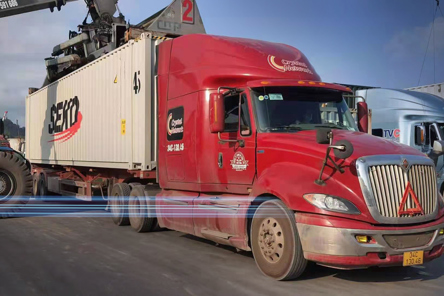For years, Type 86 entries under Section 321 have supported low-value ecommerce shipments entering the U.S. duty-free, bypassing the complexities of formal customs clearance. This process has allowed high-volume sellers—especially those shipping from China—to deliver goods quickly and at lower costs, making it a staple for cross-border ecommerce success.
However, this framework is evolving fast. On April 2, 2025, a new Executive Order eliminated duty-free de minimis treatment for Chinese and Hong Kong imports, effective May 2 at 12:01 a.m. ET. The move is part of a broader push by U.S. regulators to tighten trade compliance, close customs loopholes and improve data transparency in ecommerce supply chains.
Why Type 86 Is Under Scrutiny
The de minimis exemption was never meant to support the volume or regulatory complexity seen today. While it served as a workaround for streamlined shipping, it’s now facing criticism for enabling market imbalances and undercutting domestic brands. Agencies such as Customs and Border Protection (CBP) have raised concerns about undervaluation, safety risks and a lack of proper oversight for products that would otherwise require inspection or regulation.
As a result, traditional Type 86 filings are becoming harder to sustain, especially for shipments originating in China. Many ecommerce businesses will need to find a new solution that preserves delivery efficiency while meeting tougher enforcement standards.
SEKO’s Hybrid Parcel Solution: Built for What’s Next
To help clients adapt to this new environment, SEKO, in partnership with CustomsCity, is launching a hybrid parcel clearance model designed to solve both speed and compliance. Together, our organizations are combining logistics expertise with cutting-edge technology to deliver a solution that maintains momentum in cross border ecommerce while meeting new regulatory demands.
This “next-gen” parcel solution is launching this May and is built around one central goal: to give ecommerce brands a trusted and transparent alternative to outdated Type 86 entries.
With SEKO managing the logistics and clearance, and CustomsCity powering the technology behind duty calculation and automated entry, the new service is comprehensive. Merchants can calculate duties pre-shipment, select the most efficient fulfillment path and ensure customs compliance at the point of entry—all while maintaining a seamless customer experience.
Why This Solution Stands Out
One of the standout features of SEKO’s new offering is flexibility. Companies can choose to use only the technology component—such as the pre-shipment duty calculator—or go all-in with SEKO’s full-service parcel clearance and delivery. This modular approach supports businesses of all sizes and levels of operational maturity.
The solution also removes a common pain point for ecommerce sellers: unexpected duty bills after delivery. With SEKO’s hybrid model, duties and taxes are managed before the order ships, giving businesses and customers full transparency into costs upfront. That means no more check requests, no more surprises and no disruptions in service.
SEKO will also continue offering support for both Type 11 and Type 1 entries, providing maximum flexibility for clients who may want to shift between customs clearance types based on their product mix, origin countries or compliance needs.
Staying Compliant Without Sacrificing Speed
One of the biggest challenges with the Type 86 phase-out is the perception that compliance comes at the cost of efficiency. SEKO’s new hybrid model is built to prove otherwise. By integrating CustomsCity’s automated filing tools with SEKO’s fast-moving parcel operations, we’re able to maintain delivery speed without cutting corners on data accuracy or regulatory adherence.
Automated classification, Automated Commercial Environment (ACE) compliance and entry summary submissions are all built into the process. Real-time tracking, proactive communication and shipment visibility ensure businesses know exactly where their goods are—and that they’re cleared correctly at every step.
A Practical Answer to Policy Change
There’s no shortage of uncertainty surrounding the future of cross border ecommerce, especially as trade regulations evolve. But one thing is clear: relying on outdated entry types or temporary workarounds is no longer sustainable.
This change doesn’t have to derail your business. SEKO’s hybrid parcel clearance model gives ecommerce sellers a practical way to stay compliant, adapt quickly and keep shipments flowing smoothly to U.S. customers as the rules evolve.
The service was designed with the realities of ecommerce in mind. It allows brands to remain competitive on delivery time, cost and customer satisfaction while avoiding disruption from shifting policies. As more sellers look to manage tariff costs and adapt to regulatory changes, SEKO’s leadership in this space becomes even more valuable.
Partnering for What Comes Next
At SEKO, we’ve always believed that logistics should be a competitive advantage—not a liability. That’s why we’ve built a scalable, compliant parcel clearance solution that lets ecommerce businesses move forward with confidence.
By partnering with CustomsCity, a leading provider of ecommerce compliance technology, we’re delivering more than just a workaround. We’re setting the new standard for speed, transparency and flexibility in parcel-level customs clearance.
We encourage businesses affected by the de minimis changes or upcoming CBP Type 86 updates to explore this solution with our team. Whether you need a simple duty calculator or full-service logistics and clearance, SEKO is ready to help you adapt.
Let’s Keep You Moving
Regulatory change doesn’t have to slow you down. With SEKO’s hybrid parcel solution, your ecommerce business can move ahead without missing a beat. We’ll handle the complexity—so you can focus on growth, customer satisfaction and delivering what matters most.
Ready to learn more? Contact SEKO today to stay ahead of the curve.





